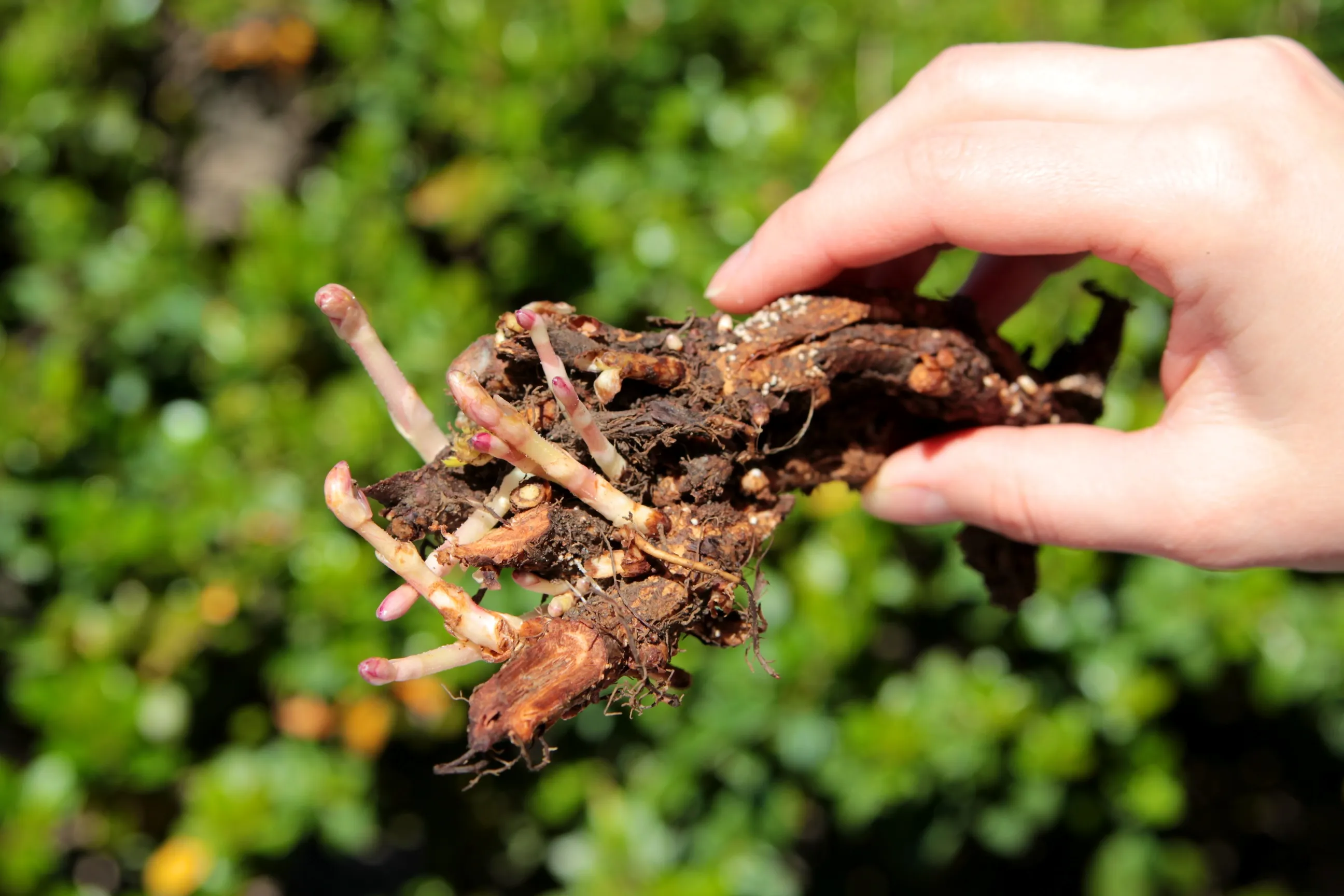

What is Trichoderma Biofungicide?
Trichoderma is a beneficial fungus that helps to protect your plants against molds and bacteria, root rot and grey mold. They create a barrier that makes it impossible for harmful bacteria and pathogens to pass through. Trichoderma surrounds your plant’s roots releasing compounds that trigger their natural defense systems.
Trichoderma spp. are present in nearly all soils and other diverse habitats. They are favored by the presence of high levels of plant roots, which they colonize readily. Some strains are highly rhizosphere competent, i.e., able to colonize and grow on roots as they develop. The most strongly rhizosphere competent strains can be added to soil or seeds by any method. Once they come into contact with roots, they colonize the root surface or cortex, depending on the strain. The best strains will colonize root surfaces even when roots a meter or more below the soil surface and they can persist at useful numbers up to 18 months after application. In addition to colonizing roots, Trichoderma spp. attack, parasitize and otherwise gain nutrition from other fungi. Since Trichoderma spp. grow and proliferate best when there are abundant healthy roots, they have evolved numerous mechanisms for both attack of other fungi and for enhancing plant and root growth.
Not only do they destroy harmful soil bacteria and fungi but they also can kill those that may already be present. Additionally, Trichoderma reduces Pythium, Fusarium, Phytothera and Rhizoctaonia. They wrap themselves around the harmful fungi, releasing the enzymes that then dissolve the invader's cell wall.
Trichoderma produce mainly two types of enzymes: cellulase and chitinase. Cellulase is an enzyme that breaks down cellulose (the structure of plant cell walls). Chitinase is an enzyme that breaks down chitin (the structure of fungal cell walls). They know when to activate which enzyme depending on what root system and soil it is residing in so as to avoid causing harm.
There are four different species of Trichoderma: harzianum, viride, longibrachiatum, and reesei. Each of these has defining characteristics and qualities but mainly are separated by what they eat.
Trichoderma harzianum is the most commonly known species of this beneficial fungi. It likes temperatures between 30 - 37 degrees Celcius. It is used as a fungicide and a biocontrol for several different fungal pathogens.
Trichoderma viride is known as the “green mold disease of mushrooms”. It breaks down both chitin and cellulose and uses them as its food source. This species can grow on wood (cellulose) and fungi (chitin). If you are considering doing any mushroom farming in the future, make sure to keep this particular species far away from any mushroom cultivation.
Trichoderma Viride has voracious appetites for all fungi.
Trichoderma longibrachiatum is not used as often as some of the other species of this fungi. It is particularly powerful and is often genetically modified to make enzymes that enable it to perform as a bioremediator (meaning that it can clean up heavy metals). Trichoderma longibrachiatum poses a high potential for causing allergic reactions in humans. It is the common black mold found in air filters and the corners of your windows.
Trichoderma reesei was first discovered during World War II on the Solomon Islands in the South Pacific. The allied soldiers were finding that it was eating the cellulose off their clothes and wearing holes in the canvas of their tents. Present-day fashion designers now use Trichoderma reesei to create the “stone washed” jeans effect that keeps going in and out of style. In addition to eating cellulose, Trichoderma reesei excretes antibiotics for the plants. These antibiotics trigger the resistance response within the plant to help it to fight off fungal pathogens.
You can find Trichoderma organically in nature in native soils on nearly every continent of the world. They can be found in soils of varying temperatures but thrive between 25 and 40 degrees Celcius. Outside those temperatures, the fungi begin to lag or die off.
Trichoderma is very resilient and can survive in the face of pathogens, heavy metals, and bacteria. These fungi are sensitive to synthetic chemicals which interrupt their natural balance and ability to organically exist in soils.
In addition to helping your plants keep themselves healthy and fight off diseases, Trichoderma also helps increase nutrient uptake, increase growth, increase yield and increase the number of seeds they can germinate.
Trichoderma works well with other microbes. Combining Mycorrhizae with Trichoderma will give even better results. So while Mycorrhizae extend the root system, mining the soil for life-sustaining molecules, Trichoderma protects against and even kills off the bad guys. Both of these improve the health and overall vigor of the plant.
Mycorrhizae are highly beneficial for organic long-term gardens but when working with a 90-day crop cycle, Trichoderma will benefit you more in a shorter amount of time. However, the two make a great team and are not competitive in any way. The two work together they help to create the most resilient plants that you can grow, with the bonus of using organic and natural products.